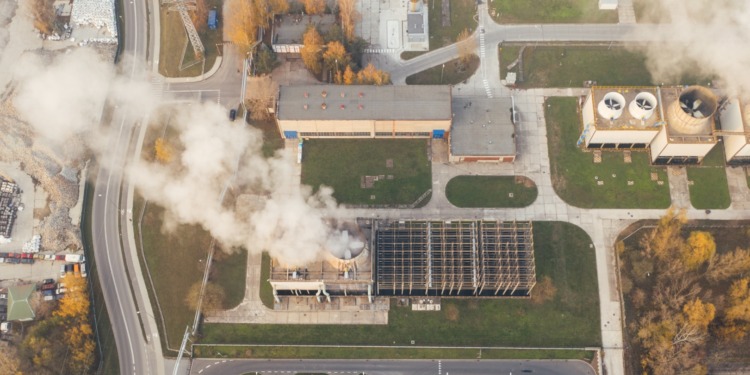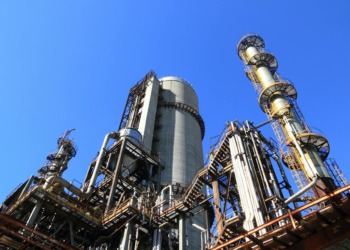The IPCC’s 2023 sixth Assessment Synthesis Report (AR6) underlines the need to act now in order to reach climate neutrality targets. To do this, we might look to decarbonisation – a phenomenon that has long been heralded as an effective climate change solution, and as a key tool in the reaching of net-zero targets.
One method for achieving decarbonisation – championed by many including UK and US National Grid Group, the International Energy Agency (IEA), and US National Energy Technology Laboratory (NETL) – is Carbon Capture and Storage (CCS). According to the British Geological Survey, CCS may be a way for us to maintain industrial production and economic growth whilst simultaneously reducing emissions.
Carbon Capture and Storage (CCS) involves catching carbon at its emission source, then transporting and burying it, thus removing it from the air. There remain, however, a large number of challenges that stand in the way of CCS, including cost, technical difficulties, safety, storage capacity, and regulatory requirements, according to Clean Energy Manufacturer Solartron ISA.
The European Commission Directive, for instance, states that issues related to regulatory requirements and technical difficulties surrounding CCS must be addressed for CO2 emissions to be reduced.
Graphyte Startup and its “Carbon Casting” solution
“We must remove 5 to 10 billion tons of CO2 from the atmosphere per year by 2050. To stay on track, that means 75 million tons by 2030. But today, the world removes almost 0 tons of carbon per year […] enter Graphyte.”
Startup Graphyte claims to have overcome these challenges with what they call “carbon casting.” Using pre-existing technology and off-the-shelf equipment, and with a production cost of under $100/ton of carbon, Graphyte boasts a carbon storage solution that is affordable, permanent, and immediately scalable, the startup claims.
Carbon Casting slashes the expenses and energy usage of current carbon removal technology, such as direct air capture, which costs hundreds of thousands of dollars per ton of removed CO2.
Graphyte’s carbon casting needs around 10% of the energy required for other carbon removal approaches, their website states, and uses materials that would otherwise be left to decompose, such as low-value crop residues or wood by-products from timber production.
Related Articles: Bill Gates Raises $1bn for Clean Energy Transition | Promising New Carbon Capture Method: Climate Fix or False Hope?
The Carbon Casting process involves the collection and drying of this low-value biomass, which prevents decomposition and therefore prevents carbon from being released into the atmosphere.
By condensing the biomass into dense carbon blocks, before wrapping, storing and monitoring these biomasses with sensors and tracers, carbon can be safely stored and buried in blocks permanently.
Barclay Rogers, founder and CEO of Graphyte, says:
“Carbon Casting lets nature effectively do the work of capturing CO2, then leverages engineering techniques to store it permanently. It’s a solution that can be done anywhere, that will change the market, and more importantly, that will help save the planet.” (bolding added)
Bill Gates’ Breakthrough Energy Venture backs Graphyte startup
“Now the world needs another breakthrough. In fact, it needs many breakthroughs. We need to get from 51 billion tons [of greenhouse gas emissions per year] to zero, while still meeting the planet’s basic needs. That means we need to transform the way we do almost everything […] my basic optimism about climate change comes from my belief in innovation. It’s our power to invent that makes me hopeful.”
— Bill Gates, Former CEO of Microsoft and Founder of non-profit Breakthrough Energy Ventures
Bill Gates confirmed in his State of the Transition 2023 report that carbon removal will be a “necessary tool to have in our toolkit” in the fight against climate change. Now, his not-for-profit organisation Breakthrough Energy Ventures has announced its backing of Graphyte Startup.
Gates’ clean energy non-profit invests in projects that focus on carbon capture, green hydrogen, sustainable aviation fuel and battery storage. It has received $1billion in funding from seven major U.S. corporations.
For Graphyte, this funding is paramount to success. With the backing and funding of such a giant as Bill Gates, their Carbon Casting solution may reach new heights. Graphyte Founder and CEO Barclay Rogers celebrates this partnership, writing that:
“I’ve spent many, many nights thinking about how we can make working land part of a permanent carbon removal solution. Nine months ago, that solution became a reality and tomorrow it will become public. With the collaboration and backing of Breakthrough Energy Ventures – the Bill Gates founded investment firm that supports cutting-edge companies leading the world to net-zero emissions – Graphyte was born. We’ve spent 2023 piloting Carbon Casting, the world’s first and only carbon removal solution that is permanent, affordable and immediately scalable.”
This kind of collaboration between nonprofit investment groups and climate startups is just what we need to be seeing to move forward in the fight against climate change. As Gates writes, overcoming climate change will take “unprecedented levels of ingenuity, collaboration, and funding” – all of which we are seeing in the partnership between Breakthrough Energy Ventures and Graphyte.
Editor’s Note: The opinions expressed here by the authors are their own, not those of Impakter.com — In the Featured Photo: Factories from above. Featured Photo Credit: Marcin Jozwiak.









